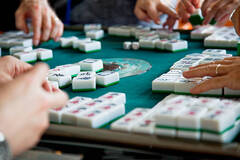High Holy Days 2023


High Holy Day Services Schedule 2024 ~ 5785
High Holy Days 2024 ~5784
DETAILS COMING SOON!
High Holy Day Services Schedule
S'LICHOT
Saturday, September 2
8 PM Panel discussion on Transgender Rights followed by an oneg and the S’lichot Service (To begin at approximately 9:30 PM)
SERVICE OF REMEMBRANCE
Sunday, September 10 (Note new time)
2:30 PM Service of Remembrance with Temple David at Temple Sinai Memorial Park, 7740 Saltsburg Road, Plum, PA 15239
ROSH HASHANAH
Friday, September 15
5:15 PM Erev Rosh HaShanah Tot Service* (Snacks starting at 5 PM)
6 PM Erev Rosh HaShanah Dinner (Reservations required; seating is limited)*
7:45 PM Erev Rosh HaShanah & Shabbat Evening Service* 
Saturday, September 16
8:15 AM Rosh HaShanah Tot Program with Danie Oberman*
9 AM Rosh HaShanah Youth & Family Service 
11 AM Rosh HaShanah & Shabbat Morning Service 
Sunday, September 17
10 AM Rosh HaShanah 2nd Day Morning Service*
4:30 PM Tashlich Service at Frick Park
(Cards of Admission not required.)
YOM KIPPUR
Sunday, September 24
5:15 PM Kol Nidre Tot Service* (Snacks starting at 5 PM)
7:45 PM Kol Nidre Service 
Monday, September 25
9 AM Yom Kippur Youth & Family Service 
11 AM Yom Kippur Morning Service 
1:30 PM Yom Kippur Beit Midrash*
1:30–2:30 PM Jewish Journeys with David Johnson
2:30–3:45 PM Beit Midrash Discussions
4 PM Yom Kippur Minchah Afternoon Service* 
5:15 PM Yom Kippur Yizkor Service & N’ilah Service* 
(Rabbi Emeritus Jamie Gibson will deliver the Yizkor Service sermon.)
Yom Kippur Break Fast (a light snack to break your fast) will follow N’ilah.
Please note that all times are approximate for Yom Kippur afternoon.
SUKKOT
Friday, September 29
5:45 PM Soup, Salad, & Sandwiches in the Sukkah
7 PM Erev Sukkot & Shabbat Evening Service followed by a Sundae Oneg
Saturday, September 30
10 AM Sukkot & Shabbat Morning Service at Rodef Shalom Congregation
(4905 Fifth Ave, Pittsburgh, PA 15213)
6 PM Sensory Havdalah in the Temple Sinai’s Sukkah
SIMCHAT TORAH
Friday, October 6
10 AM Simchat Torah Morning Service with Yizkor Service at Temple Sinai
5 PM Dinner for New Students & New Members (Reservations required)
6:30 PM Mostly Musical Shabbat & Simchat Torah Evening Service with Consecration of New Students
*Open to the community. Advanced registration and Community Cards of Admission are required.
 American Sign Language interpreter provided
American Sign Language interpreter provided
Livestream and Zoom links will be provided closer to the dates above.
what are the High Holy Days?
The High Holy Days are a period that spans nearly two months and might better be called the “Season of Return.” Throughout this time, our rituals and services try to guide us back to the best versions of ourselves, which often gets lost in the busyness of life. Our many observances encourage us to pause and reflect, so that we return our various relationships to wholeness and renew our commitment to righteous living.
Elul (אלול)
Change rarely happens overnight, especially when we are the ones trying to break old, unhealthy habits and develop new, healthy ones. The month of Elul gives us time to reorient ourselves to our personal missions and visions so that we can identify where we’ve succeeded and where we’ve fallen short. We offer S’lichot prayers that remind us of the qualities embodied by our ancestors and the divine attributes that we might want to emulate. In Sefardi tradition, S’lichot begins at the beginning of Elul; in Ashkenazi tradition, S'lichot starts at the end of Shabbat about a week before Rosh HaShanah. During Elul there is also a practice of reciting Psalms 27 and 130, symbolically asking God to guide us back to the path of righteousness.
Rosh HaShanah (ראש השנה)
Our preparation in Elul leads us to Rosh HaShanah on the 1st day of the month of Tishrei, which celebrates the creation of the world and God’s sovereignty. We eat round challah to remind us of the cycle of the year and a crown. We hear the blasts of the shofar that announce the presence of God in our midst. The shofar’s penetrating sound rouses our lazy souls to do the work of repentance.
We call upon God as a loving and forgiving parent who only wants the best for us.
Ten Days of Repentance (עשרת ימי תשובה Aseret Y’mei T’shuvah)
The ten days from the beginning of Rosh HaShanah to the end of Yom Kippur invite us to repair the mistakes of the past year and commit to doing better. One of the rituals during this time is Tashlich, which we often do on the afternoon of Rosh HaShanah. During Tashlich we try to unburden ourselves of our failures and missteps by casting sticks, pebbles, or birdseed into flowing water. (People have often used bread for Tashlich, but it harms the fish and birds and pollutes the water.) This period also includes the Fast of Gedaliah, which takes place on the 3rd of Tishrei. During the daylight fast, we mourn the assassination of the Judean governor Gedaliah by other Jews and remember how important it is for us to support each other and our community. The Shabbat between Rosh HaShanah and Yom Kippur is called Shabbat Shuvah and includes special insertions into prayers that ask God to remember us for goodness and inscribe us in the Book of Life.
Yom Kippur (יום כפור)
By the time we reach Yom Kippur, we have hopefully done much of the work of repair to return our human relationships to wholeness. If so, then the services of Yom Kippur focus on how to bring wholeness to our relationship with the Divine. With a full sundown-to-sundown fast from food, drink, sex, cosmetics, and leather; simple clothes (often white); and a day spent in prayer, we ask God to forgive us for the harm we have caused and to guide us toward a better life. The final blasts of the shofar at the end of Yom Kippur mark the Days of Repentance but reverberate within us so we continue
the work.
Sukkot & Sh’mini Atzeret-Simchat Torah (סכות ושמיני עצרת-שמחת תורה)
The High Holy Days don’t end with Yom Kippur but continue with the festival celebrations of Sukkot and Simchat Torah. On Sukkot we celebrate our many blessings—it’s called Z’man Simchateinu, the Time of Our Joy. We build sukkot, temporary structures with sturdy walls but a porous roof, to remind us to enjoy what we have despite the impermanence of life. We are commanded to “dwell” in the sukkah for seven days, which the rabbis of old understood as eating meals there. You’re also welcome to study, work, and even sleep in it, too! We also shake the lulav, a bouquet of date palm, willow, and myrtle, and etrog (a lemon-like fruit) to acknowledge God’s presence all around us and the gift of the fall harvest.
The Torah also mentions a holiday called Sh’mini Atzeret that’s observed eight days after Sukkot begins. We combine that holiday with a celebration of the Torah called Simchat Torah. During Sh’mini Atzeret-Simchat Torah, we sing and dance with the Torah scrolls. We also read the last chapters
of the Torah and begin again with the first chapters.
From the beginning of Elul through the end of Simchat Torah, we have finally come back full-circle—to beginning of the year to the beginning of the Torah, and to our truest selves.
Sat, July 27 2024
21 Tammuz 5784
High Holy Day Resource Center
Read the High Holy Day Booklet
Submit a NEW Roll of Remembrance Listing
Donate to High Holy Day Live Streaming & High Holy Day Pulpit Flower Funds
Request a Courtesy Valet Parking Permit
Request High Holiday Courtesy (Reciprocal) Seating
Request Guest Cards of Admission


